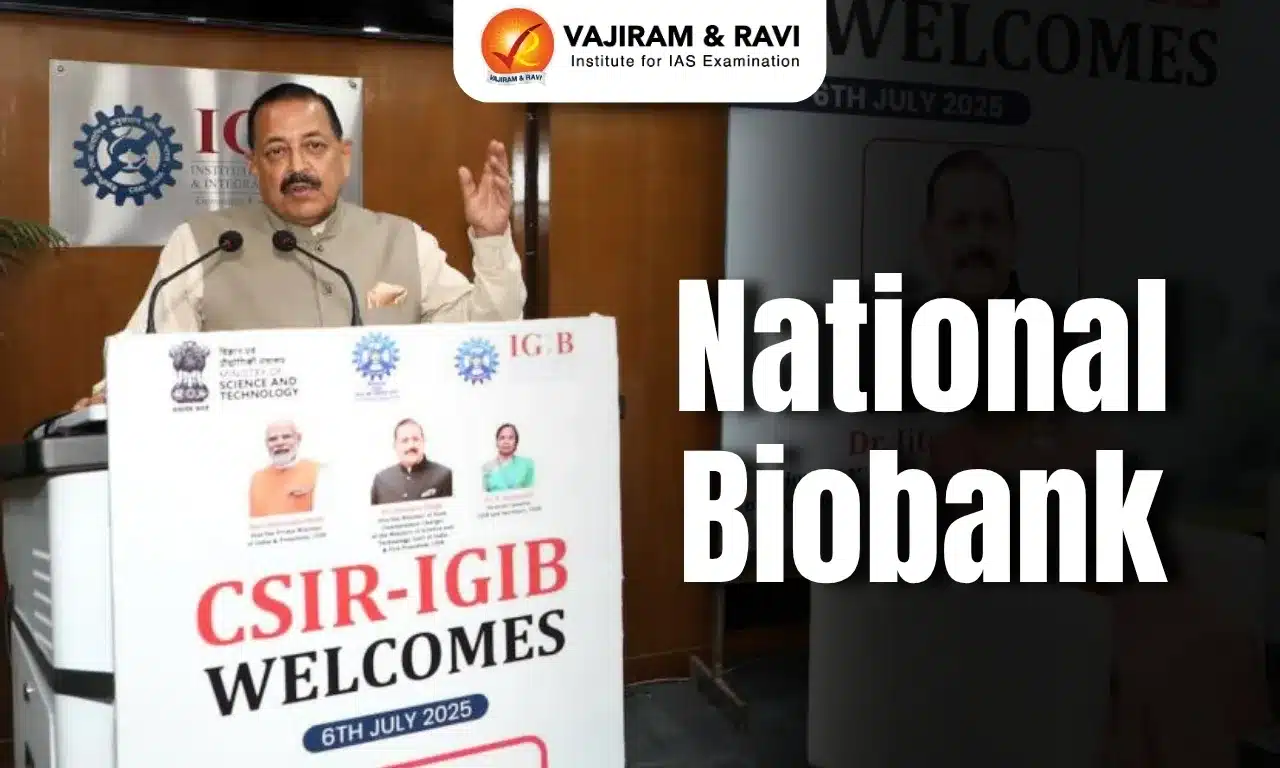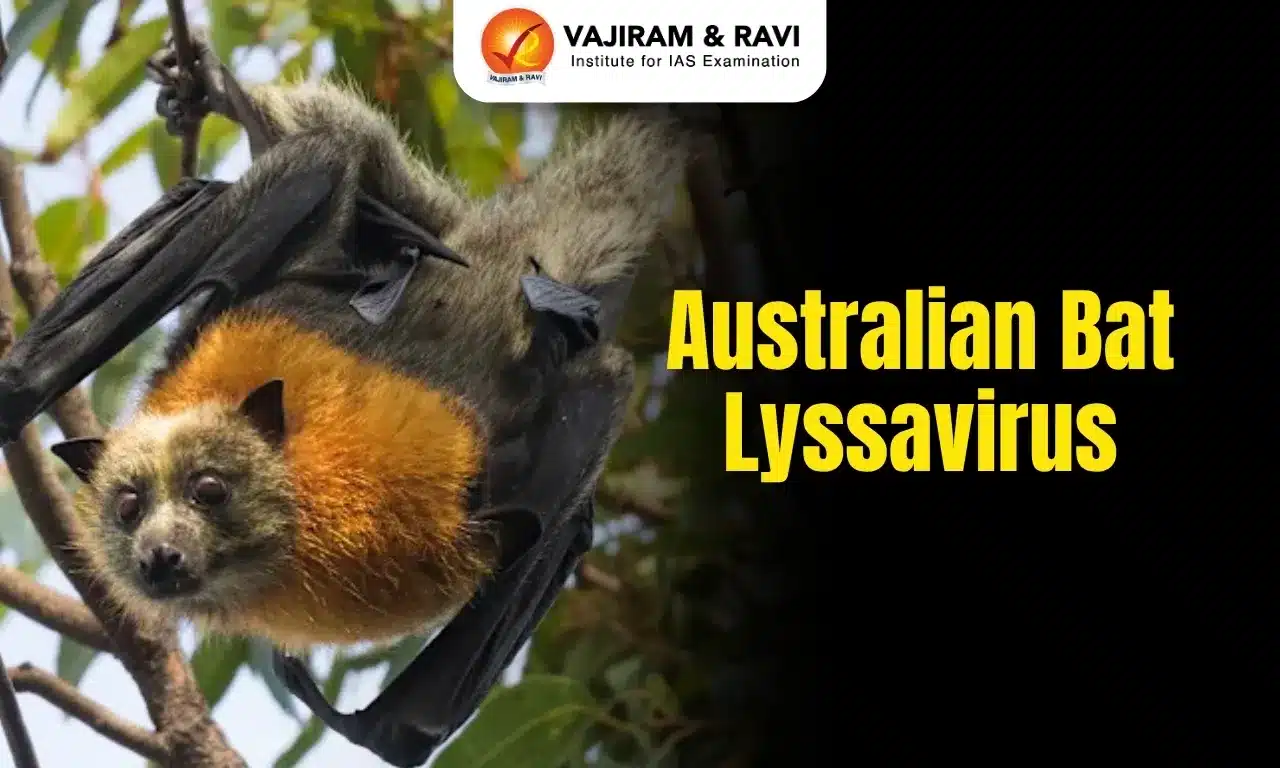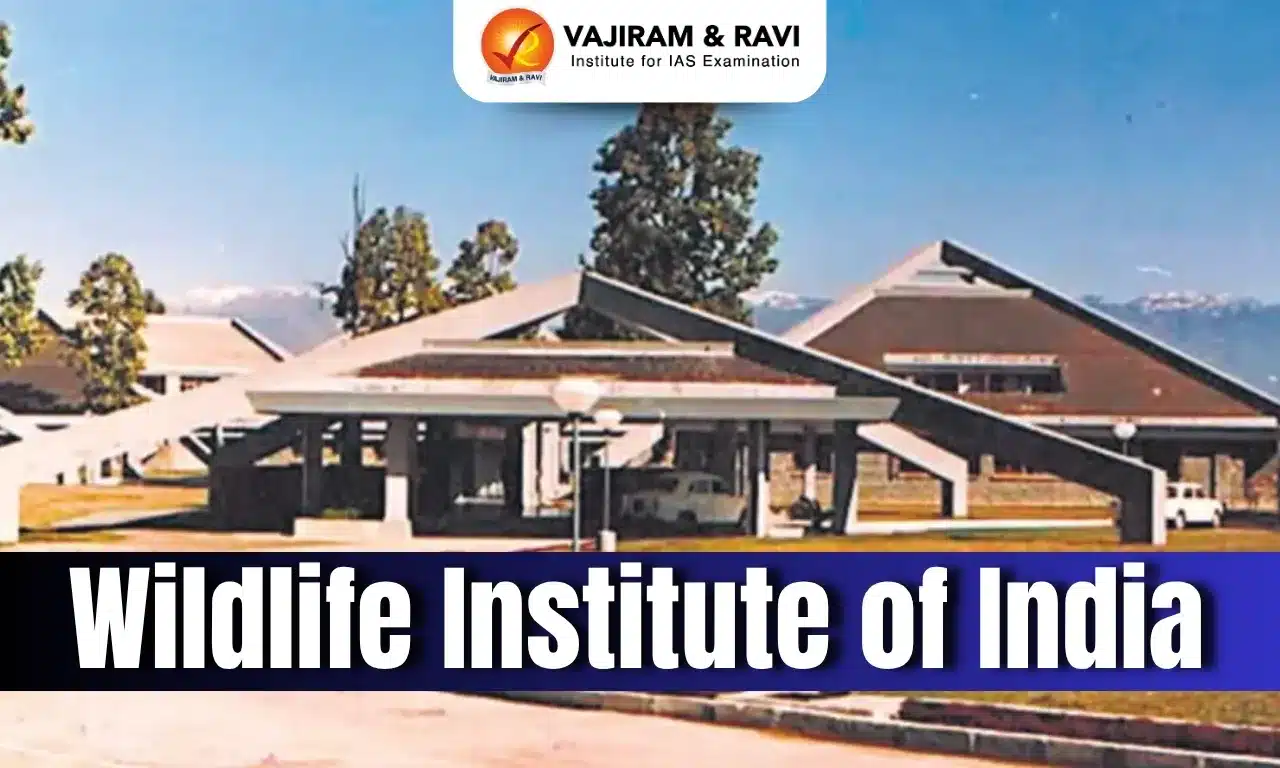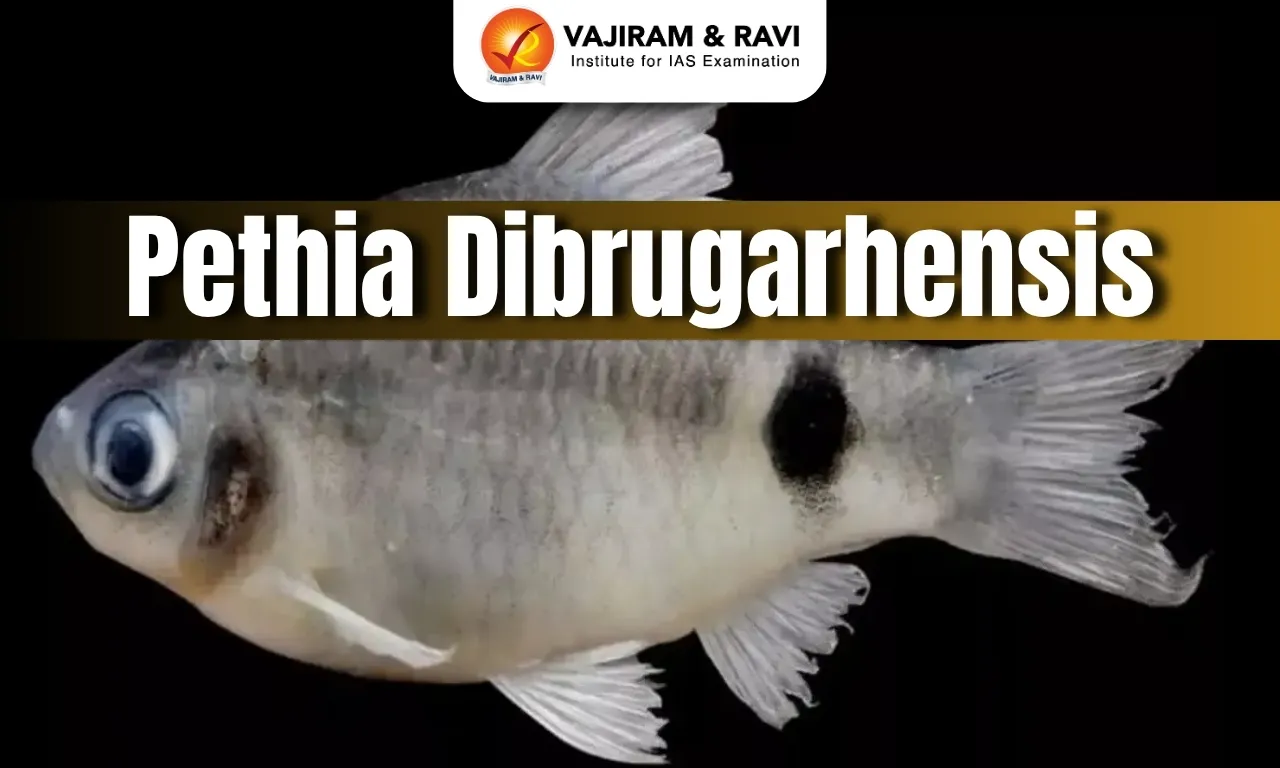National Biobank
National Biobank will serve as the backbone of a nationwide cohort study, collecting comprehensive genomic, lifestyle, and clinical data from 10,000 individuals across India.
National Biobank Latest News
Recently, the union Minister of State (Independent Charge) for Science & Technology inaugurated the state-of-the-art Phenome India "National Biobank" at the CSIR-Institute of Genomics and Integrative Biology (IGIB).
About National Biobank
- It will serve as the backbone of a nationwide cohort study, collecting comprehensive genomic, lifestyle, and clinical data from 10,000 individuals across India.
- It is tailored to capture the country’s unique diversity—across geography, ethnicity, and socio-economic backgrounds.
- It is designed to be a long-term, data-rich study tracking the health trajectories of individuals over several years.
- It will help scientists uncover disease patterns, gene-environment interactions, and response to therapies—all within the Indian context.
- It is launched under the Phenome India Project.
- Researchers believe the initiative will aid early diagnosis, improve therapeutic targeting, and bolster the fight against complex diseases such as diabetes, cancer, cardiovascular ailments, and rare genetic disorders.
Key Facts about Phenome India Project
- It is officially named Phenome India-CSIR Health Cohort Knowledgebase (PI-CheCK) is an initiative launched by the Council of Scientific and Industrial Research (CSIR) on December 7, 2023.
- Objective: The main objective of the project is to develop India-specific risk prediction models for cardio-metabolic diseases including diabetes, liver diseases, and cardiac diseases.
- It is India’s first-ever pan-India longitudinal health monitoring study focused specifically on cardio-metabolic health.
- Participants include around 10,000 individuals—primarily CSIR employees, pensioners, and their spouses—from across 17 states and 24 cities.
- Collected data includes clinical questionnaires, lifestyle and dietary habits, anthropometric measurements, imaging and scanning data, and extensive biochemical and molecular data.
Source: PIB
National Biobank FAQs
Q1: What is the Council of Scientific and Industrial Research?
Ans: Council of Scientific & Industrial Research (CSIR), India, a premier national R&D organisation, is among the world's largest publicly funded R&D organisation. CSIR's pioneering sustained contribution to S&T human resource development is acclaimed nationally.
Q2: What is a genome?
Ans: A genome is the complete set of genetic information in an organism. It provides all of the information the organism requires to function. In living organisms, the genome is stored in long molecules of DNA called chromosomes.









